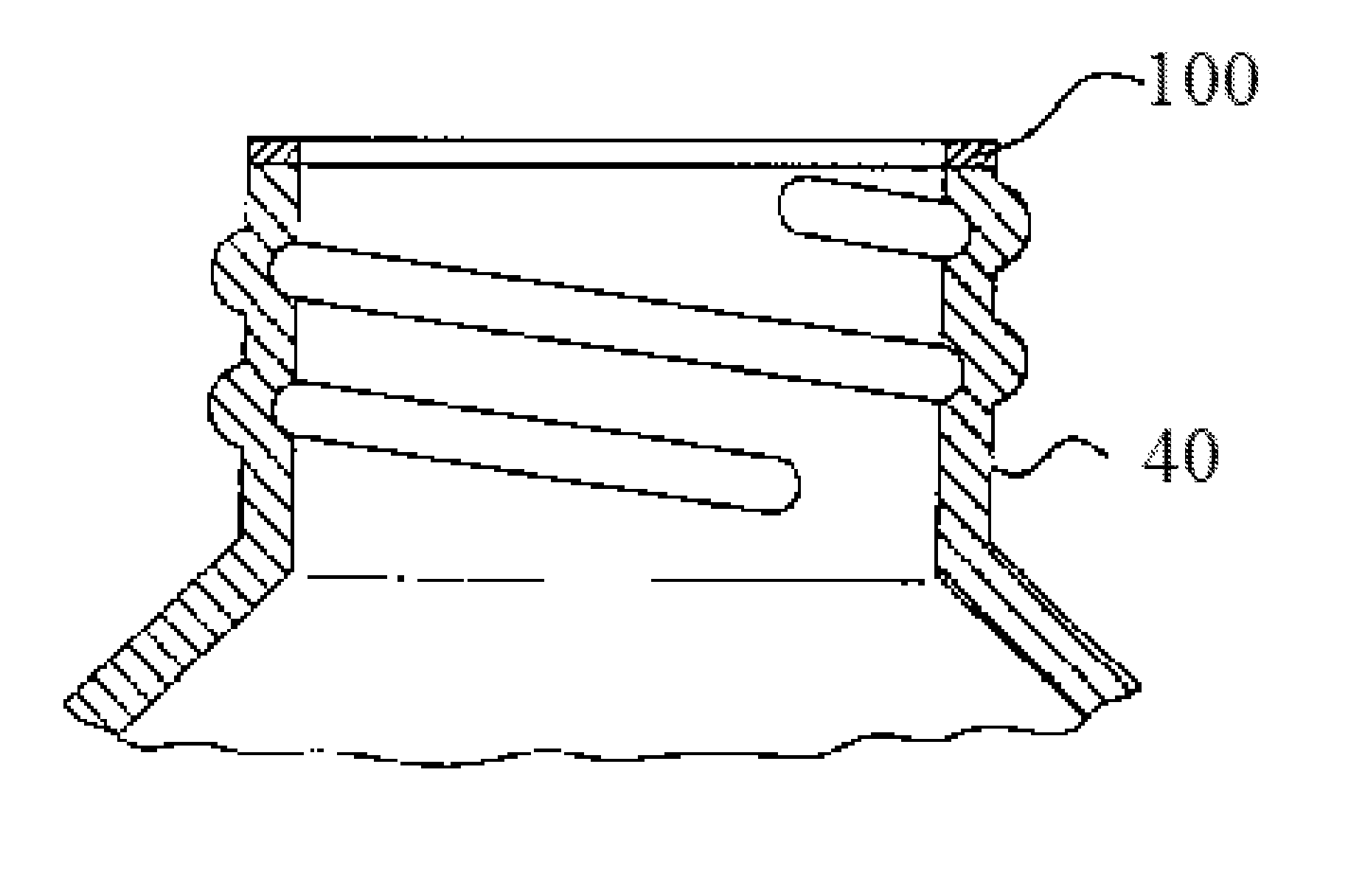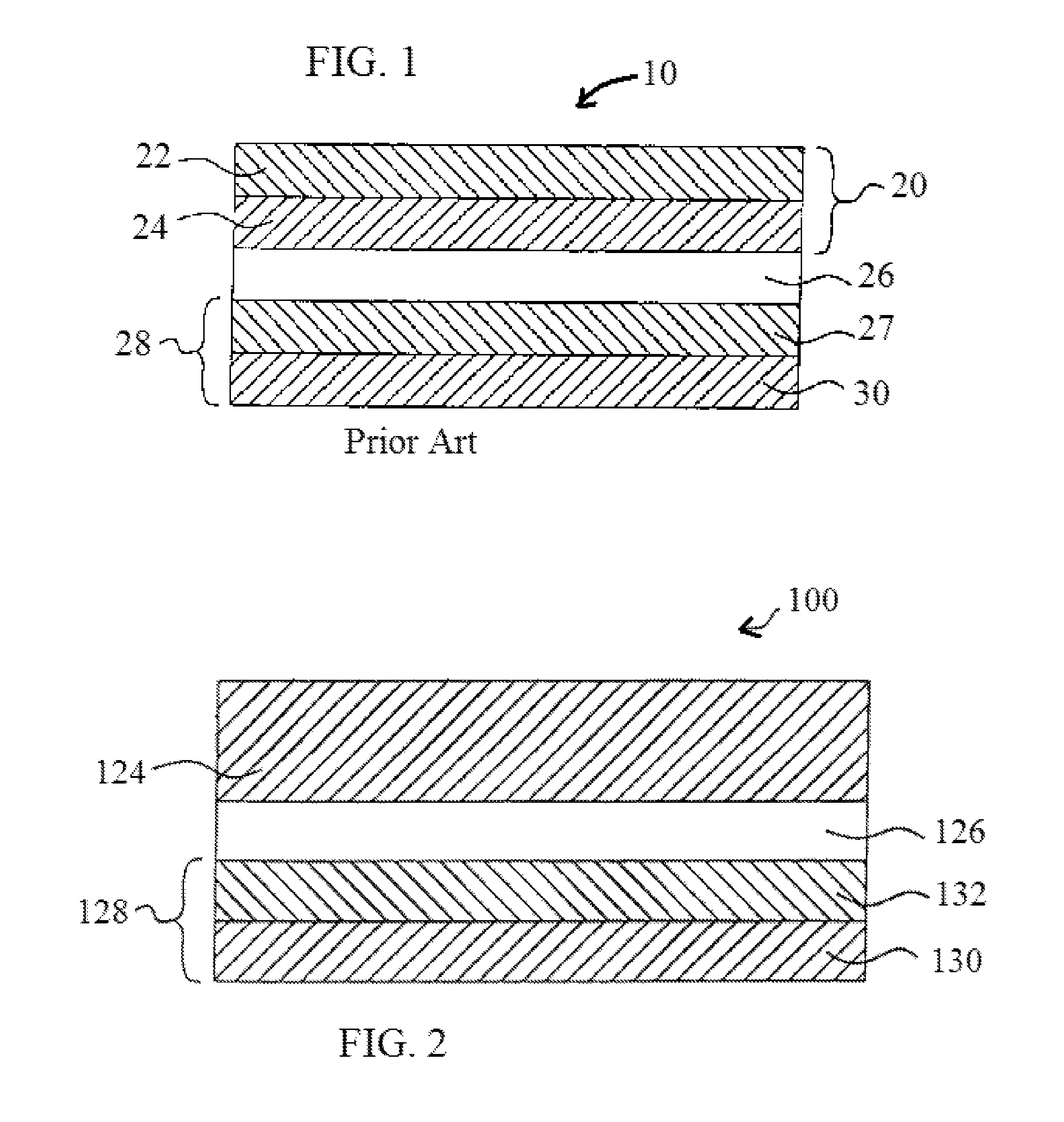Synthetic two-piece induction seal products
a technology of induction seals and synthetic materials, applied in the field of synthetic two-piece induction seal products, can solve the problems of affecting the sealing effect of synthetic materials, and contaminating the contents of containers, etc., to achieve stable pore dimensions, clean, safe and structurally sound, and efficient and cost-effective effects
- Summary
- Abstract
- Description
- Claims
- Application Information
AI Technical Summary
Benefits of technology
Problems solved by technology
Method used
Image
Examples
Embodiment Construction
[0014]Prior art FIG. 1 schematically represents the two-piece induction seal 10, in cross-section, described in U.S. Pat. No. 6,131,754 to Smelko for “Synthetic two-piece induction seal” issued Oct. 17, 2000. The described seal 10 comprises a compressing agent 20, which is formed of an upper layer of synthetic foam 22 and a lower layer of synthetic polymer 24, a wax layer 26 and an inductive membrane layer 28 including a metallic foil 27, preferably aluminum foil, with a lower adhesive layer 30. The synthetic foam layer 22 of the compressing agent 20 may be formed of a material with a suitable compression factor comparable to pulpboards of the type traditionally used in induction seals, e.g., coextruded low density polyethylene (LDPE), low density polyethylene (LDPE), polypropylene (PP) and polystyrene (PS). The features of the prior art compressing agent 20 and the foam layer 22 respectively comprise a synthetic foam layer material as the compressing agent and a laminated layer of ...
PUM
| Property | Measurement | Unit |
|---|---|---|
| thickness | aaaaa | aaaaa |
| pH | aaaaa | aaaaa |
| temperature | aaaaa | aaaaa |
Abstract
Description
Claims
Application Information
 Login to View More
Login to View More - R&D
- Intellectual Property
- Life Sciences
- Materials
- Tech Scout
- Unparalleled Data Quality
- Higher Quality Content
- 60% Fewer Hallucinations
Browse by: Latest US Patents, China's latest patents, Technical Efficacy Thesaurus, Application Domain, Technology Topic, Popular Technical Reports.
© 2025 PatSnap. All rights reserved.Legal|Privacy policy|Modern Slavery Act Transparency Statement|Sitemap|About US| Contact US: help@patsnap.com



